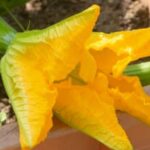Are you wondering what type of netting to use over gardening vegetables? Netting is an essential tool for any vegetable gardener, providing protection from pests, birds, and harsh weather conditions. In this article, we will explore the importance of using netting in vegetable gardening and provide valuable tips on choosing the right type of netting for your specific garden.
Using netting in your vegetable garden offers a range of benefits. It serves as a barrier to keep pests such as insects and birds away from your precious crops, reducing the need for harmful chemical pesticides. Netting also provides protection from extreme weather conditions, such as strong winds and heavy rain, which can damage delicate plants. Additionally, it creates a microclimate that helps regulate temperature and humidity levels, promoting healthy growth for your vegetables.
When it comes to selecting the right type of netting for your vegetable garden, there are several factors to consider. From material choices to installation methods, it’s important to understand how to effectively utilize netting for maximum benefit. By carefully evaluating your specific gardening needs and considering various options for netting materials, you can ensure that you make the best choice for your vegetable garden.
The Benefits of Using Netting for Vegetable Gardening
When it comes to vegetable gardening, using netting can offer a wide range of benefits that can help improve the overall success of your garden. From protecting your plants from pests to providing shade and shelter, netting is an essential tool for any avid gardener.
Pest Protection
One of the main advantages of using netting in your vegetable garden is its ability to protect your plants from pests. Whether it’s pesky insects or hungry birds, netting can create a barrier that prevents these unwanted visitors from damaging your vegetables. By choosing the right type of netting, you can effectively keep pests at bay without harming your plants.
Shade and Shelter
In addition to pest protection, netting can also provide shade and shelter for your vegetables. This can be particularly beneficial for delicate plants that may struggle in harsh sunlight or strong winds. By using the appropriate netting, you can create a more favorable growing environment for your vegetables, ultimately leading to healthier and more abundant produce.
Disease Prevention
Furthermore, using netting over your vegetable garden can help prevent the spread of diseases. Certain types of netting can act as a barrier against airborne pathogens, reducing the risk of infections that could harm your plants. By taking this proactive approach to disease prevention, you can safeguard the health and vitality of your vegetable garden throughout the growing season.
Overall, the benefits of using netting for vegetable gardening are undeniable. From protecting against pests and diseases to providing much-needed shade and shelter, investing in the right type of netting is crucial for ensuring a successful harvest.
Choosing the Right Type of Netting for Your Specific Vegetable Garden
When it comes to selecting the right type of netting for your vegetable garden, there are a few factors to consider in order to ensure the best protection for your plants. The overall goal is to keep pests and animals away from your vegetables, while still allowing sunlight, air, and water to reach the plants. This section will provide guidance on choosing the most suitable netting for your specific vegetable garden.
Understanding Your Garden’s Needs
Before deciding on the type of netting to use, it’s important to assess your garden’s specific needs. Consider the types of pests and animals that are common in your area, as well as any specific threats to your vegetables. For example, if you have a bird problem, you may need a finer mesh netting that will prevent them from accessing your crops.
Types of Netting Materials
There are various options when it comes to netting materials, each with its own advantages and disadvantages. Some common choices include plastic netting, nylon netting, and wire mesh netting. Plastic netting is lightweight and easy to handle, while wire mesh offers durability and strength. Consider which material will best suit your needs and provide the level of protection required for your vegetables.
Considerations for Selecting Netting
In addition to understanding your garden’s specific needs and the different materials available, there are other factors to consider when choosing the right type of netting. This includes the size and shape of your vegetable garden, as well as any budget constraints or environmental considerations. Ultimately, selecting the appropriate netting for your vegetable garden requires thoughtful consideration of these various elements in order to effectively protect your plants throughout the growing season.
Different Options for Netting Materials
When it comes to choosing the right type of netting for your vegetable garden, there are several different options available. Each type of netting material has its own unique qualities and benefits, so it’s important to understand the characteristics of each one in order to make an informed decision. Here are some different options for netting materials to consider for your vegetable garden:
- Bird Netting: Bird netting is a lightweight and flexible option that is designed to keep birds and other pests away from your vegetables. It is made from a durable material, usually nylon or polypropylene, and can be easily draped over plants.
- Insect Netting: Insect netting is specifically designed to protect your vegetables from insect infestations. It is made from a fine mesh material that allows air and water to pass through while keeping harmful insects out.
- Shade Netting: If you live in a sunny area, shade netting can help protect your vegetables from excessive sun exposure. This type of netting material provides shade while still allowing air circulation, making it ideal for delicate crops.
When considering which type of netting material to use over your gardening vegetables, it’s important to take into account the specific needs of your garden and the types of pests or environmental factors that may impact your plants.
Using the right type of netting material can make a significant difference in the success of your vegetable garden. Whether you’re looking to keep birds at bay or protect your plants from harmful insects, understanding the different options for netting materials will help you make an informed decision that ensures the health and growth of your vegetables.
Factors to Consider When Selecting Netting for Your Vegetables
When it comes to choosing the right type of netting for your vegetable garden, there are several factors to consider. The first thing to think about is the type of vegetables you are growing. Some plants may require a finer netting to protect them from specific pests, while others may need a larger mesh size to allow for pollination by insects.
Another important factor to consider is the climate and weather conditions in your area. If you live in a windy region, you’ll want to choose a heavier netting that can withstand strong gusts. On the other hand, if your area experiences hot temperatures, you’ll need a netting that provides shade and ventilation to prevent heat stress on your plants.
It’s also crucial to take into account the pests and wildlife that may pose a threat to your vegetable garden. For example, if birds are a common problem in your area, you’ll want to select a netting that is specifically designed to keep them at bay. Similarly, if insects are your main concern, look for netting with built-in insect protection.
Considering these factors will help you determine what type of netting to use over gardening vegetables and ensure that it provides effective protection without hindering the growth of your plants. By taking these aspects into consideration, you can make an informed decision that will benefit both your garden and the overall health of your vegetables.
How to Properly Install Netting Over Your Vegetable Garden
When it comes to properly installing netting over your vegetable garden, there are a few key steps to keep in mind to ensure the effectiveness of the netting and the protection of your crops. Here are some important tips for correctly installing netting over your vegetable garden:
- Measure your garden: Before purchasing netting, it’s important to measure the dimensions of your vegetable garden to determine how much netting you will need.
- Select the right type of netting: Consider factors such as the type of pests you are trying to protect against, the size of the holes in the netting, and the durability of the material.
- Secure the netting: Once you have obtained the appropriate netting for your garden, carefully lay it over your crops and secure it in place using stakes or weights. This will prevent pests from entering and damaging your vegetables.
- Regularly inspect and adjust: It’s essential to regularly inspect your netting for any tears or damage, and make adjustments as needed to keep it securely in place over your vegetable garden.
Properly installing netting over your vegetable garden is crucial in protecting your crops from pests and other potential threats. By following these steps and taking care to choose the right type of netting for your specific needs, you can effectively safeguard your vegetables and promote a healthy, productive garden.
Remember that careful installation is key to ensuring that your vegetables are protected while still allowing access for pollinators and proper air circulation. Taking these precautions will help maintain a thriving vegetable garden throughout the growing season.
Maintaining and Caring for Netting to Ensure Longevity and Effectiveness
When it comes to using netting over gardening vegetables, it’s important to understand the necessary maintenance and care required to ensure its longevity and effectiveness. Proper maintenance can not only prolong the life of the netting but also help in protecting your vegetable garden from pests and harsh weather conditions.
One of the simplest yet effective ways to maintain netting is to regularly inspect it for any tears, holes, or damage. Patching up any small holes or tears immediately can prevent them from becoming bigger issues later on. Additionally, you should clean the netting periodically to remove any dirt, debris, or plant residues that may have accumulated. This will not only improve the appearance of the netting but also prevent any blockage that could affect its effectiveness.
Caring for netting also involves properly storing it when not in use. When the gardening season comes to an end, make sure to remove the netting carefully and store it in a dry and clean area. Avoid folding or twisting the netting too tightly as this can cause damage to its structure. Keeping it properly stored will ensure that it remains in good condition for the next gardening season.
| Maintenance | Care |
|---|---|
| Regularly inspect for tears or holes | Clean periodically to remove dirt and debris |
| Patch up any small holes immediately | Properly store when not in use |
Tips for Removing Netting at the End of the Gardening Season
When the gardening season comes to an end, it is important to properly remove the netting that has been protecting your vegetables. This process is crucial for preparing your garden for the next growing season and ensuring the longevity of the netting for future use. Here are some tips for removing netting at the end of the gardening season.
First, carefully inspect the netting for any signs of wear and tear. Look for any holes, tears, or damage that may have occurred during the growing season. It is important to repair any damage before storing the netting to ensure its effectiveness in the future.
Next, gently remove the netting from your vegetable garden, being mindful not to damage any plants or crops in the process. It can be helpful to have a partner assist you with this task to ensure a smooth and careful removal process.
Once removed, clean the netting by shaking off any dirt, debris, or leftover plant material. You can also rinse the netting with water if needed. Allow it to fully air dry before storing it away for future use.
It’s also important to store the netting properly in a cool, dry place away from direct sunlight and moisture. This will help prevent any mold or deterioration of the netting during storage, extending its lifespan and effectiveness when used again in the future.
| Tips for Removing Netting | Details |
|---|---|
| Inspect for Damage | Check for holes, tears, or damage and make repairs |
| Gentle Removal | Be careful not to damage plants while removing |
| Clean and Dry | Shake off dirt and debris, allow to air dry before storing |
| Proper Storage | Store in a cool, dry place away from sunlight and moisture |
Final Thoughts on the Importance of Using the Right Type of Netting for Vegetable Gardening
In conclusion, the use of netting over gardening vegetables is a crucial component of successful vegetable gardening. The benefits of using netting, such as protecting plants from pests and adverse weather conditions, cannot be overlooked.
By choosing the right type of netting for your specific vegetable garden, you can ensure that your plants are provided with the optimal level of protection while allowing for necessary airflow and sunlight. It is important to carefully consider factors such as mesh size, material durability, and UV protection when selecting netting for your vegetables.
When it comes to deciding what type of netting to use over gardening vegetables, there are various options available in terms of materials, including nylon, polyethylene, and metal. Each material has its own set of advantages and considerations, so it’s essential to assess which one will best suit the needs of your garden.
Additionally, proper installation and maintenance play a crucial role in the effectiveness of the netting. Ensuring that the netting is securely installed and properly cared for will contribute to its longevity and overall performance.
As you prepare for the end of the gardening season and consider removing the netting from your vegetable garden, it’s important to do so with care in order to avoid damaging any plants or causing unnecessary stress on them. Storing the netting properly during the off-season will also help maintain its quality for future use.
Overall, when it comes to using netting over gardening vegetables, making informed decisions regarding the type of netting to use and taking appropriate steps for installation and maintenance will go a long way in promoting a healthy and thriving vegetable garden.
Frequently Asked Questions
What Is the Best Netting for Vegetable Garden?
The best netting for a vegetable garden is one that is made of durable materials such as nylon or polyethylene, with small enough gaps to keep pests out. Look for netting specifically designed for garden use.
Should I Put a Net Over My Vegetable Garden?
Yes, putting a net over your vegetable garden can help protect your plants from birds, insects, and other pests. It can also prevent animals from trampling on or eating your vegetables, ultimately improving the yield of your garden.
How Do You Secure Netting Over Vegetables?
To secure netting over vegetables, you can use stakes to anchor the netting to the ground, ensuring it doesn’t blow away in the wind. Another option is to use hoops or frames to provide structure and support for the netting. Make sure the netting is taut and covers the entire vegetable patch securely.

If you’re looking to get into vegetable gardening, or are just looking for some tips on how to make your current garden better, then you’ve come to the right place! My name is Ethel and I have been gardening for years. In this blog, I’m going to share with you some of my best tips on how to create a successful vegetable garden.





